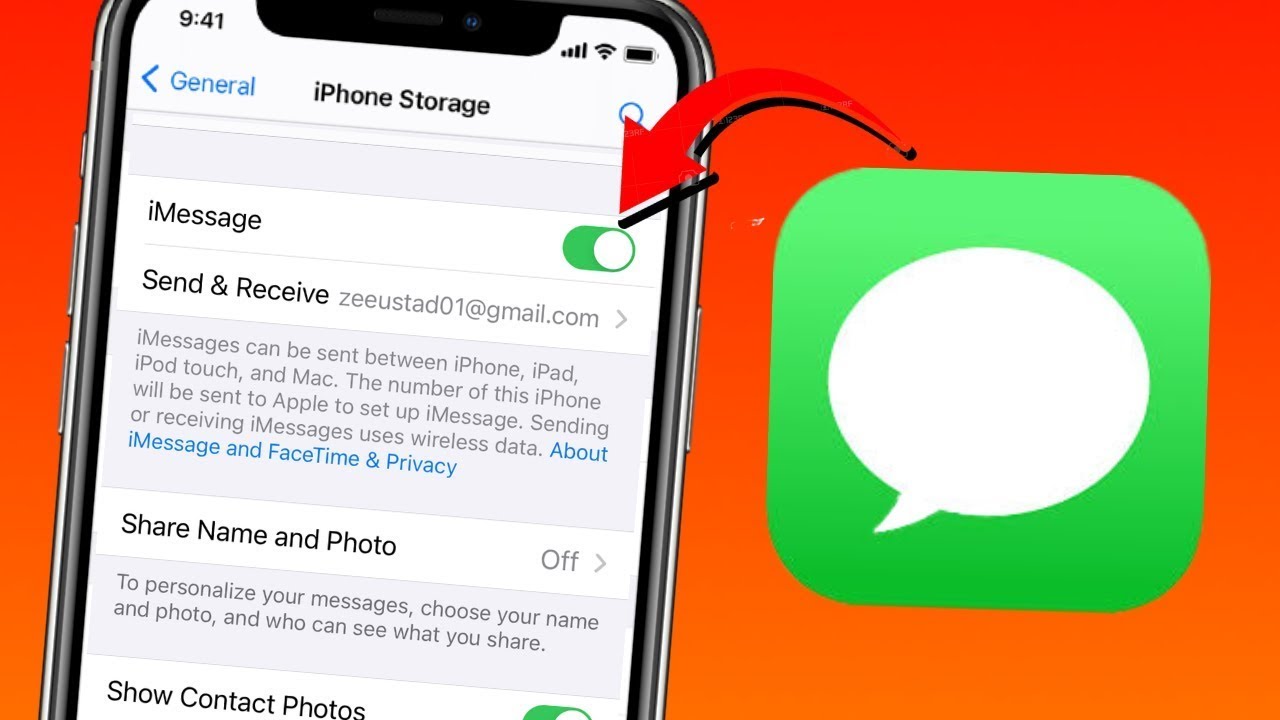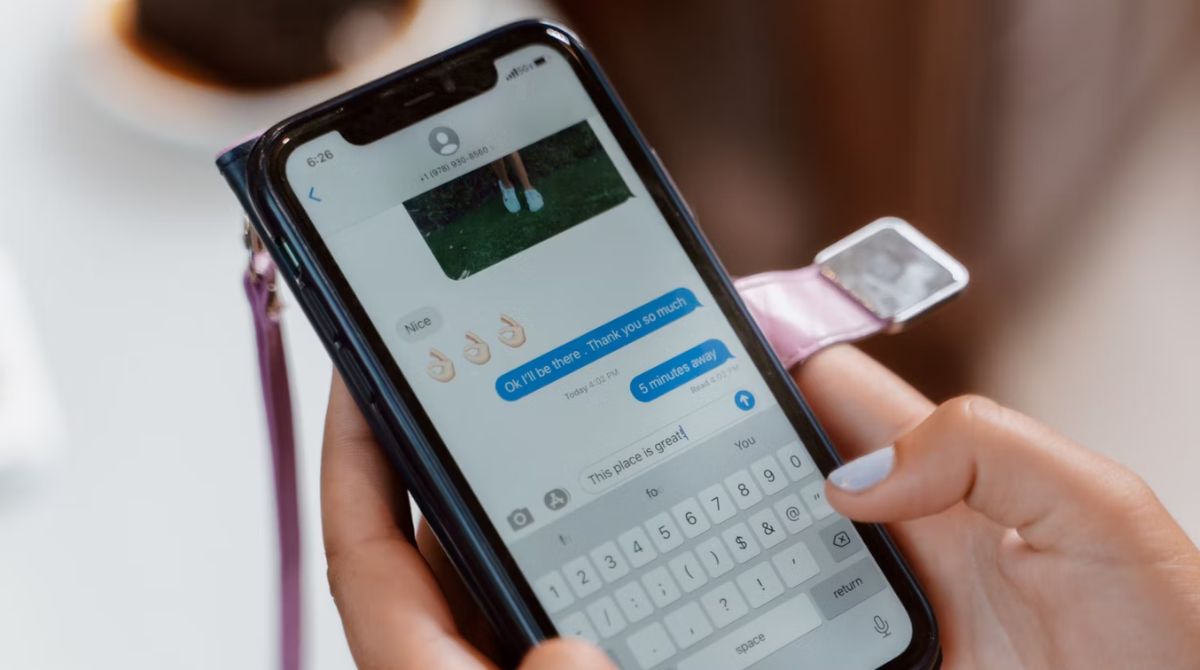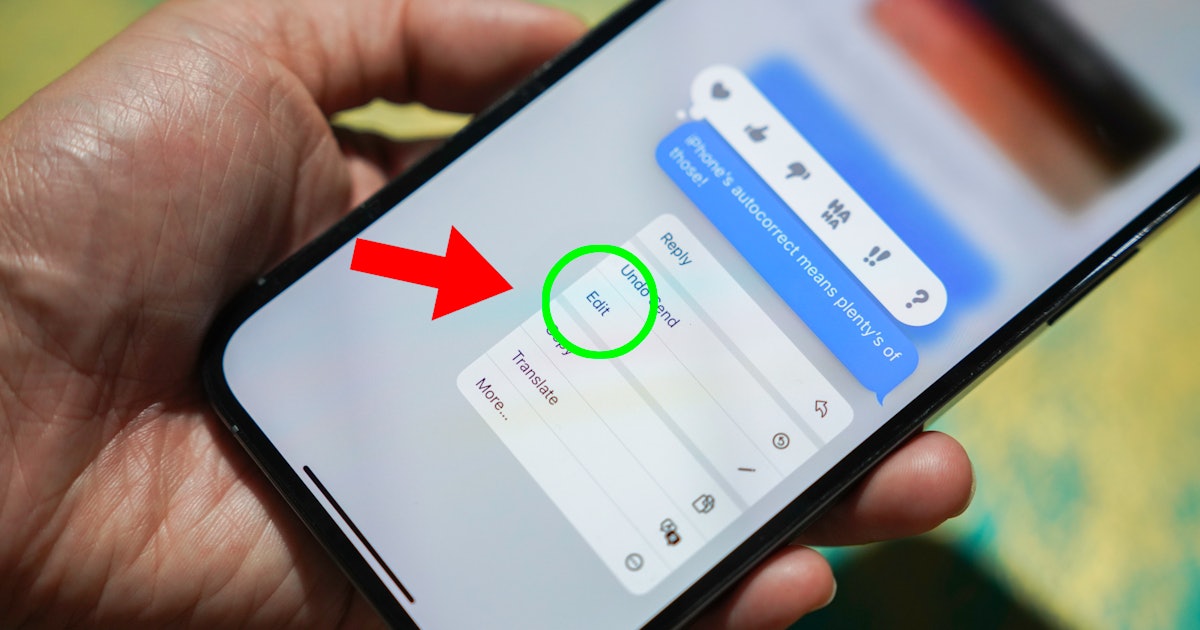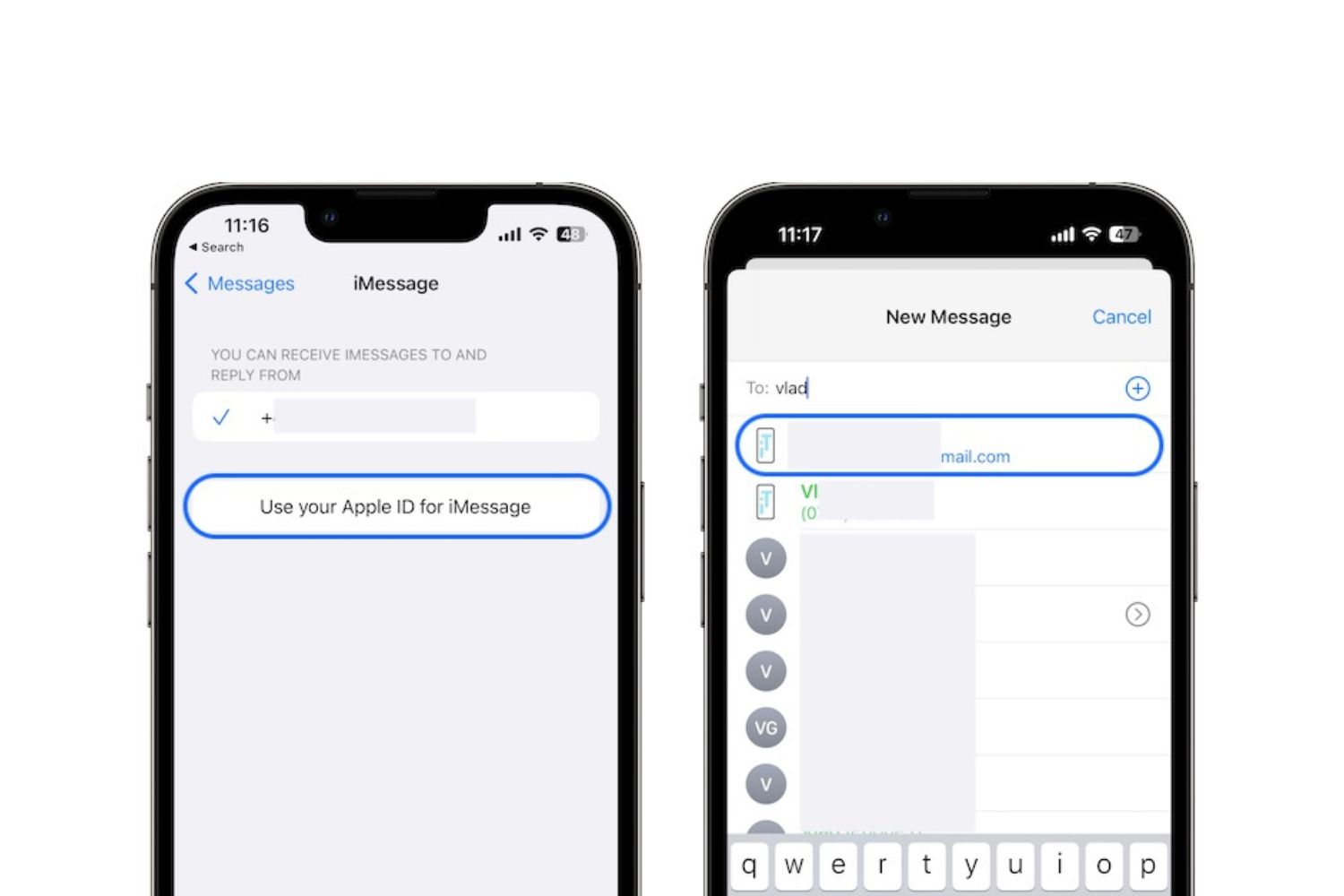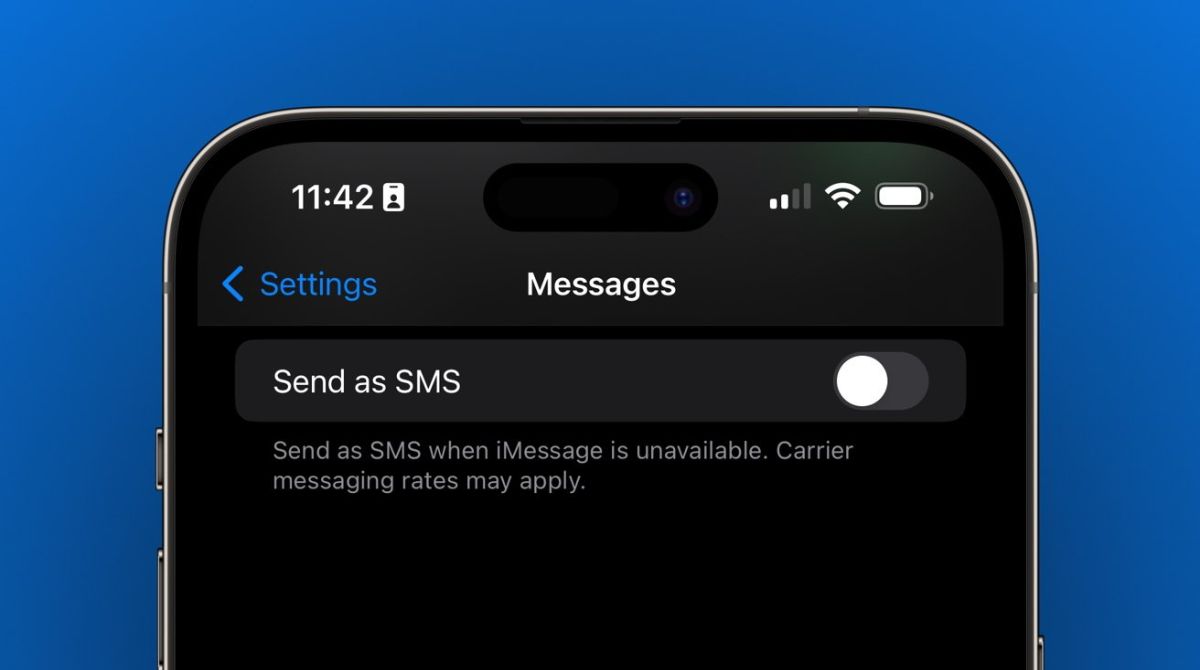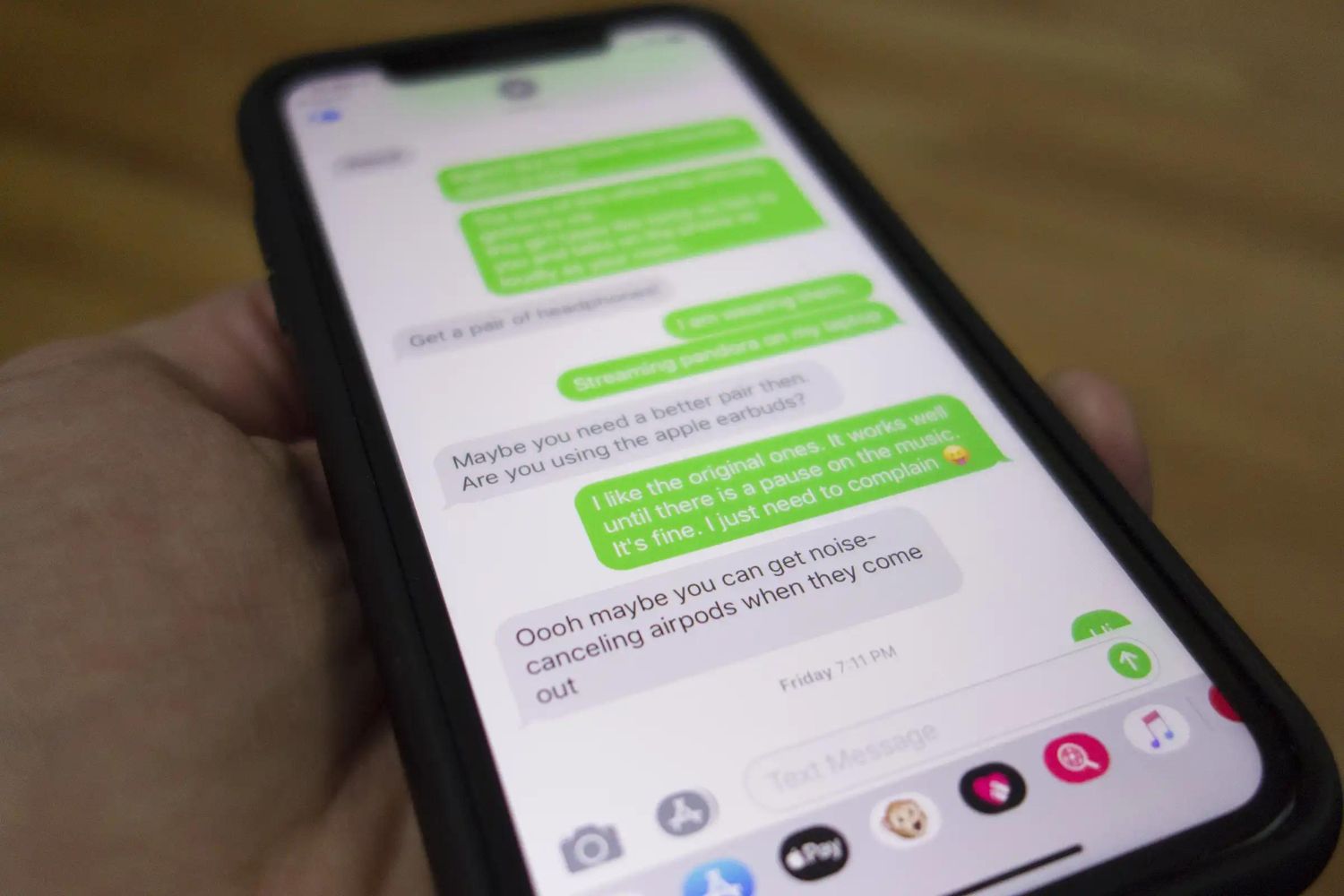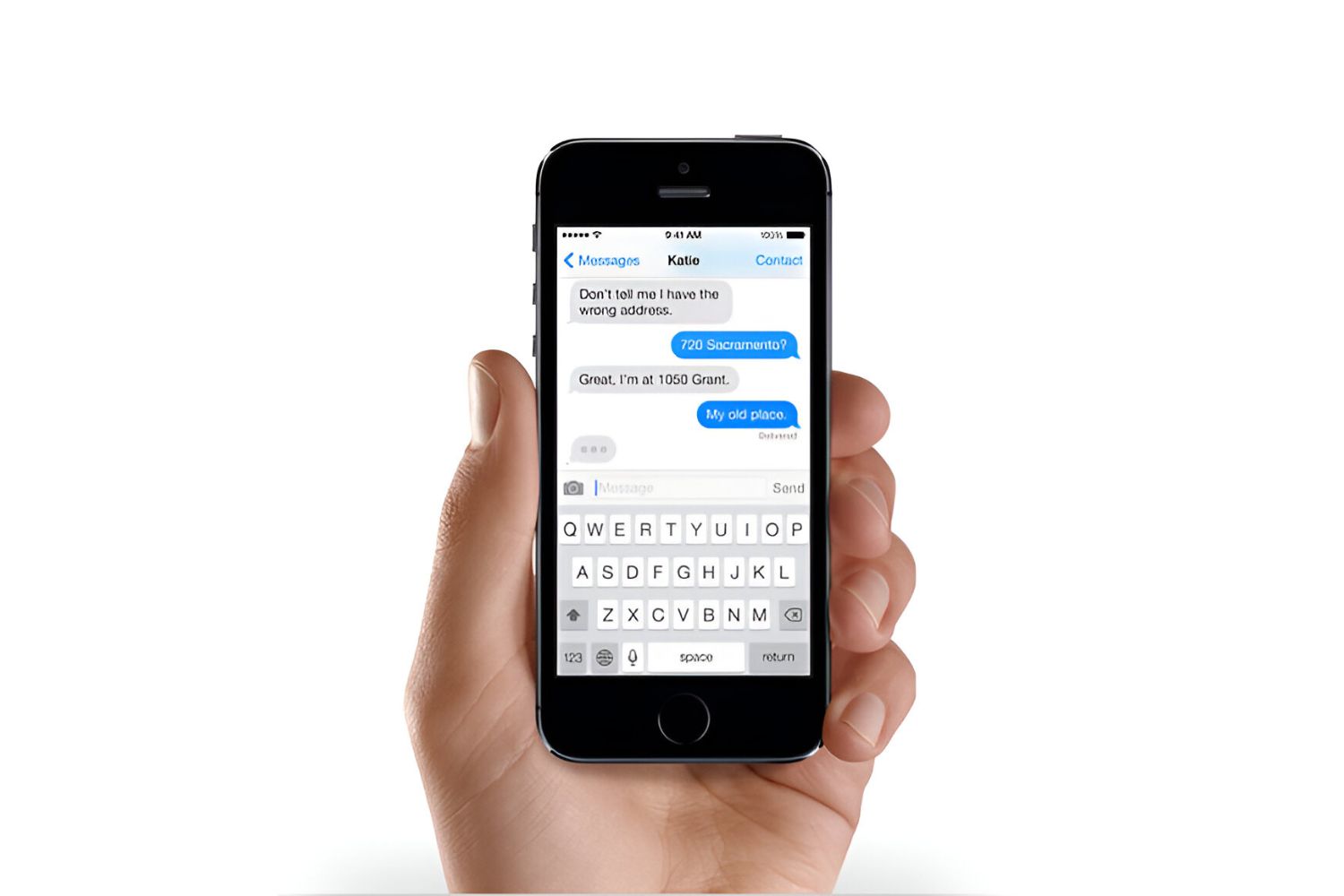Introduction
iMessage is a messaging service developed by Apple Inc. that allows users to send text messages, photos, videos, and other media to other Apple users. It is integrated into Apple’s various devices, including the iPhone, iPad, and Mac, making it convenient and widely used among Apple users. iMessage offers a range of features, such as read receipts, end-to-end encryption, and the ability to send messages over Wi-Fi or mobile data.
However, there may be instances where you need to send an iMessage as a regular text message, especially when you are in an area with weak or no internet connection. In such cases, converting an iMessage to a text message can ensure that your message is delivered successfully. Thankfully, Apple provides options to turn off iMessage and send messages as text on all its devices.
In this article, we will guide you through the process of turning off iMessage and sending messages as text on your iPhone, Mac, and iPad. We will also provide troubleshooting tips in case you encounter any issues while sending iMessages as text messages.
What is iMessage?
iMessage is a messaging service exclusive to Apple devices that allows users to send text messages, photos, videos, voice memos, and other media to other iOS and macOS users. Unlike traditional SMS (Short Message Service), iMessage uses the internet to transmit messages, offering several advantages over standard text messaging.
One of the main benefits of iMessage is its ability to send messages over Wi-Fi or cellular data, enabling free messaging between Apple devices without incurring SMS charges. Additionally, iMessage supports secure end-to-end encryption, ensuring that your conversations are protected and private.
With iMessage, you can engage in group chats, send animations and stickers, share your location, and even play games with friends. The service also includes read receipts, allowing you to see when your message has been read by the recipient.
Furthermore, iMessage seamlessly syncs across all your Apple devices, providing a unified messaging experience. You can start a conversation on your iPhone and continue it on your Mac or iPad without missing a beat.
It is important to note that iMessage functions only when both the sender and recipient have Apple devices and are connected to the internet. If you are sending a message to a non-Apple user or if your iPhone is unable to connect to the internet, your message may not be delivered. In such cases, it may be necessary to convert your iMessage into a regular text message.
When to Send iMessage as Text
While iMessage is a convenient way to communicate with other Apple users, there are situations when you may need to send an iMessage as a text message instead. Here are a few scenarios where sending iMessage as text can be beneficial:
- Poor or no internet connection: If you are in an area with weak or no Wi-Fi or cellular data connection, your iMessage may not go through. Switching to text message mode ensures that your message gets delivered, even without a stable internet connection.
- Contact using a non-Apple device: iMessage is exclusive to Apple devices. If you are sending a message to someone who does not have an iPhone or iPad, your iMessage may not reach them. By sending the message as a text, you can ensure that it is compatible with any type of mobile device.
- Temporary iMessage service disruption: There may be occasional service disruptions or maintenance work that affects iMessage functionality. During such periods, it is advisable to send messages as texts to ensure uninterrupted communication.
- International messaging: While iMessage works internationally, there may be instances where it is more cost-effective or convenient to send a regular text message, especially if you have a limited cellular data plan or if you are roaming. Sending a text message in these cases can help you avoid any additional charges.
By understanding when to send iMessage as a text message, you can ensure that your messages reach their intended recipients in various situations, regardless of the type of device they are using or the availability of internet connectivity.
How to Turn Off iMessage on iPhone
If you are experiencing issues with sending iMessages as texts on your iPhone or if you simply want to disable iMessage temporarily, you can follow these steps to turn off iMessage:
- Open the “Settings” app on your iPhone.
- Scroll down and tap on “Messages.”
- In the Messages settings, you will find the “iMessage” toggle switch. Tap on it to turn off iMessage.
- A confirmation pop-up will appear. Tap on “Turn Off” to disable iMessage.
- Your iPhone will now revert to sending messages as regular text messages instead of iMessages.
By turning off iMessage on your iPhone, you will be able to send messages as texts to both Apple and non-Apple users. Remember to turn iMessage back on when you have a stable internet connection or when you want to send messages using iMessage again.
If you are switching from an iPhone to a non-Apple device permanently, it is advisable to disable iMessage before making the switch. This will ensure that your phone number is disassociated from iMessage and that your messages are no longer routed through the iMessage service.
Keep in mind that turning off iMessage will only affect your iPhone and not your other Apple devices. If you want to disable iMessage across all your devices, you will need to follow the respective steps on each device.
How to Send iMessage as Text on iPhone
If you are experiencing connectivity issues or need to send an iMessage as a text on your iPhone, you can follow these steps to ensure your message gets through:
- Open the “Messages” app on your iPhone.
- Tap on the conversation where you want to send the iMessage as a text message.
- Once you are in the conversation, hold down on the message you want to send as a text.
- A menu will appear. Select “Send as Text Message” from the options.
- Your iPhone will attempt to send the message as a regular text instead of an iMessage.
If the message is delivered successfully, you will see a green bubble indicating that it was sent as a text message. However, keep in mind that if the contact has iMessage enabled or if they have a stable internet connection, the message may still be received as an iMessage.
By following these steps, you can ensure that your message is sent as a text when necessary, providing you with a reliable means of communication in various situations.
How to Send iMessage as Text on Mac
If you are using iMessage on your Mac and need to send a message as a regular text instead of an iMessage, you can follow these steps:
- Open the “Messages” app on your Mac.
- Click on the conversation where you want to send the iMessage as a text message.
- Type your message in the message field as you would normally.
- Press and hold the “Option” key on your keyboard.
- While holding the “Option” key, click on the send button (which looks like a paper airplane).
By pressing the “Option” key and clicking on the send button, your message will be sent as a text instead of an iMessage. It will be converted and delivered as a regular text message to the recipient, regardless of whether they are using an Apple device or not.
Note that this feature is only available on Mac computers running macOS Sierra (10.12) or later versions. If you are using an older version of macOS, you may not have the option to send iMessages as texts directly from your Mac.
By utilizing this feature on your Mac, you can ensure that your messages reach their intended recipients even in situations where iMessage may not be the ideal method of communication.
How to Send iMessage as Text on iPad
If you are using iMessage on your iPad and need to send a message as a regular text instead of an iMessage, you can follow these steps:
- Open the “Messages” app on your iPad.
- Select the conversation where you want to send the iMessage as a text message.
- Type your message in the message field as you normally would.
- Press and hold the blue send button (which looks like an upward-pointing arrow).
- A menu will appear with the option to send the message as a text. Tap on “Send as Text Message”.
By selecting “Send as Text Message” from the menu, your message will be converted and sent as a regular text message instead of an iMessage.
It’s important to note that this option is only available if your iPad has cellular capabilities. If you are using a Wi-Fi-only iPad, you will not have the ability to send iMessages as texts since there is no cellular network connection.
By following these steps on your iPad, you can ensure that your messages are delivered as regular texts when necessary, providing you with alternative means of communication in various situations.
Troubleshooting iMessage Sending Issues
While iMessage is a convenient messaging service, you may encounter occasional issues when sending messages. Here are some troubleshooting steps you can take to resolve common iMessage sending issues:
- Check your internet connection: Ensure that you have a stable internet connection, either through Wi-Fi or cellular data. Poor internet connectivity can prevent iMessages from being sent. If you have limited or no internet access, consider sending the message as a regular text.
- Check recipient’s iMessage settings: If you are specifically having issues sending iMessages to a particular contact, ask them to check their iMessage settings. They may have accidentally disabled iMessage or have restrictions in place that prevent receiving iMessages from unknown contacts.
- Reboot your device: Sometimes, a simple reboot can resolve temporary software glitches that may be causing iMessage sending issues. Try restarting your device and then attempt to send the message again.
- Update your device and iMessage: Outdated software can sometimes cause compatibility issues with iMessage. Make sure that both your device’s operating system and the Messages app are up to date. Updating to the latest software version can often resolve any underlying issues.
- Reset iMessage settings: If you continue to experience problems with sending iMessages, you can try resetting your iMessage settings. Go to Settings > Messages > Send & Receive and tap on your Apple ID. Choose “Sign Out” and then sign back in. This will refresh your iMessage settings and may resolve any configuration issues.
- Contact your carrier: If you are unable to send iMessages even with a stable internet connection, it is possible that your carrier may have restrictions or issues that are affecting iMessage functionality. Reach out to your mobile service provider for assistance and see if there are any known network issues.
If the issue persists after trying these troubleshooting steps, it may be worth contacting Apple Support for further assistance. They can help diagnose and resolve any technical issues that may be causing problems with sending iMessages.
Conclusion
iMessage is a powerful messaging service that allows Apple users to communicate seamlessly across various devices. However, there are situations where sending iMessages as regular texts becomes necessary. Whether you are in an area with poor internet connectivity or need to reach a non-Apple user, the ability to send iMessages as texts provides a reliable means of communication.
In this article, we discussed how to turn off iMessage on your iPhone, Mac, and iPad, as well as how to send iMessages as text messages on these devices. By following the step-by-step instructions provided, you can easily switch between iMessage and regular text message modes to ensure your messages are delivered successfully.
We also covered troubleshooting tips for resolving common iMessage sending issues. From checking internet connections and updating software to resetting iMessage settings, these troubleshooting steps can help you overcome any obstacles you may encounter while sending iMessages.
Remember, iMessage offers a range of features and benefits, including end-to-end encryption, multimedia sharing, and seamless synchronization across devices. However, it is important to be aware of the limitations of iMessage, such as its dependency on internet connectivity and compatibility with other devices.
By understanding how to send iMessages as text messages and troubleshooting any sending issues, you can use iMessage effectively and ensure reliable communication in diverse scenarios.







